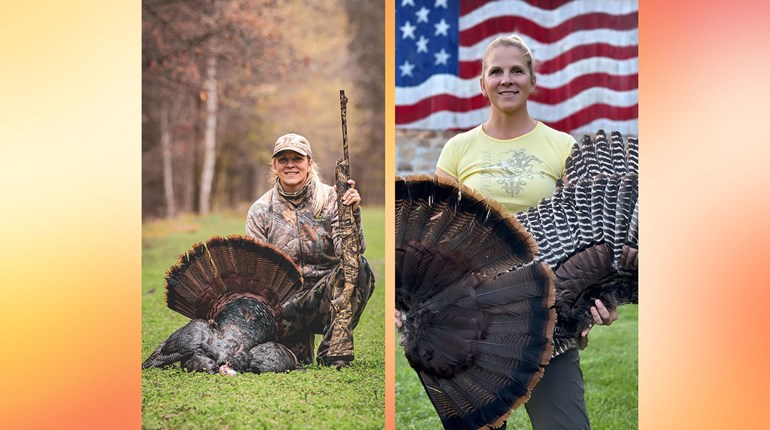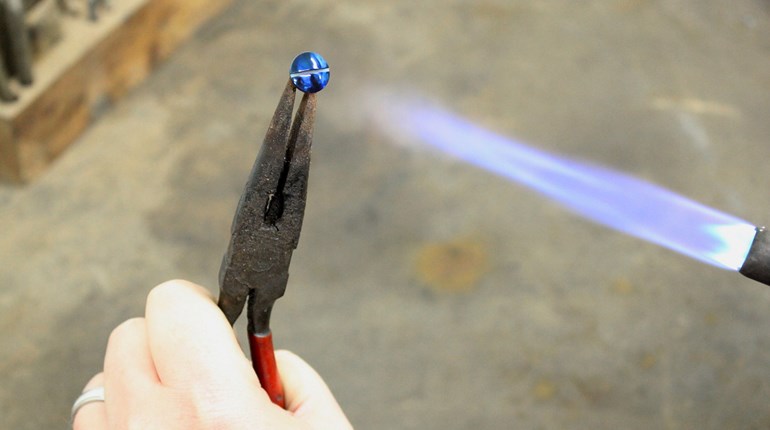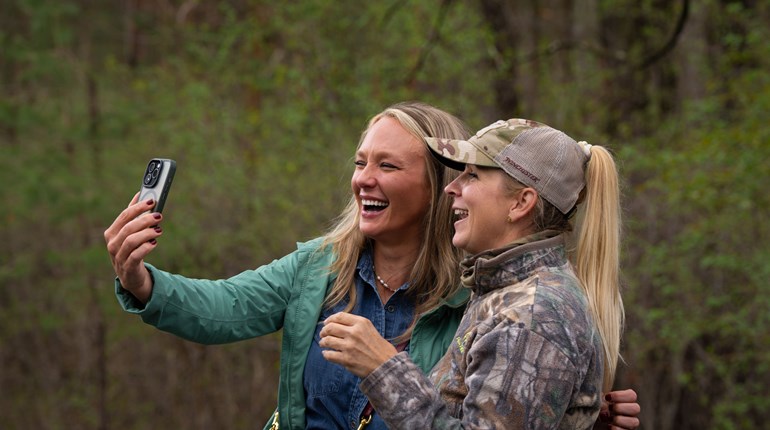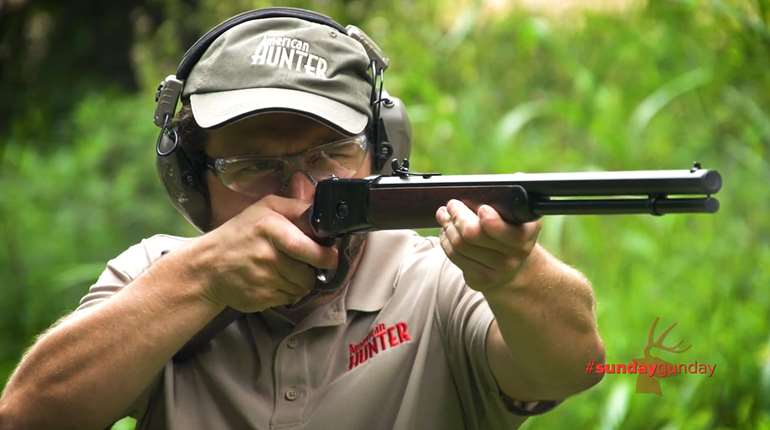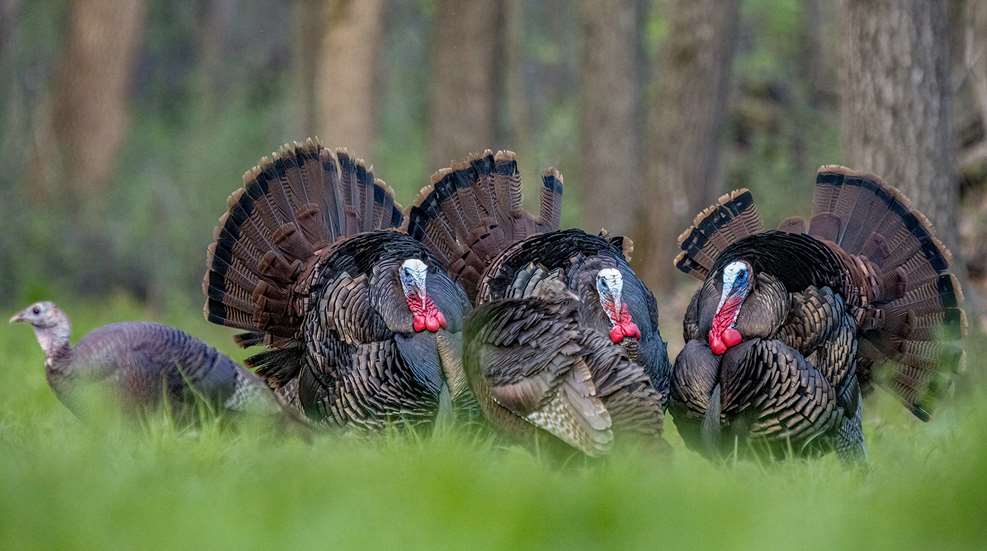
Like me, do you scratch your head from time to time in the spring and ask yourself, “Why did that gobbler just do that?” Like the proverbial probe “Why did the chicken cross the road?” every crazy turkey move incites your inquisitiveness. We will likely never know why turkeys sometimes pull a Russian “Crazy Ivan” move, but I have my theories along with strategies you can employ when pondering gobblers that ditch Mother Nature’s textbook and go rogue.

1. Quiet Time
“Why did he stop gobbling,” my wife, Sharon, whispered to me from the creekside setup site we had chosen to wait for a tom and his two hens to join us. The occasional pitter patter of spring rain tapped our raingear. The rain was not a hunt-ending event, but I responded: “I think the weather has subdued his enthusiasm.”
Weather can push the mute button on turkeys, but hunting pressure controls the volume on a turkey remote even more. The rain was letting up, but even so, the tom did not fire up with the corresponding positive weather forecast.
Strategy
First, reposition. Your habitat situation often determines your move, but consider flanking moves, left or right, or advance straight ahead. Close the gap in either situation to 100 yards or slightly less. This offers the quiet tom a chance to peek without wearing out a pair of sneakers when you call again.
 Decoy or no decoy? It’s a tough decision. Thick cover may not be the best place to use a decoy, but in semi-open terrain a hen or jake-and-hen combo works well.
Decoy or no decoy? It’s a tough decision. Thick cover may not be the best place to use a decoy, but in semi-open terrain a hen or jake-and-hen combo works well.
Next, keep your startup conversation restrained with a soft, tender appeal. You likely already amped up your initial responses to incite a meeting, but now your goal surely focuses on sex appeal to spark curiosity. You may ignite the tom to gobble a response, but do not bet on it. Instead, aim your shotgun at the most likely location for the tom to arrive and scan continually for him to appear without making a peep. Also, be alert to the sounds of drumming. He may not gobble, but the turned-on tom could very well strut in for a finale.
As for our muted turkey dilemma, I decided to edge another 50 yards closer to the roost, believing the rain stalled the turkey’s morning fly-down. After staking a decoy and getting comfortable, I tenderly sent a brief series of yelps toward the roost and positioned Sharon for a possible shot. It took another 10 minutes, but the tom arrived as quiet as a church mouse, eyeing our hen decoy to the point it walked to within 15 yards of the end of my wife’s CVA Scout’s barrel. End of story.
2. Blabbering in the Wrong Direction
“He’s walking away! I can tell he’s getting farther from our location.” The desperation in my partner’s voice seemed more desperate than the earlier gobbles we heard from the love-starved tom. Why a gobbler would blast his intentions with moves our way and suddenly put it in reverse had us both head-scratching. Yet here we were. Would it be best to just search for a more willing tom or hatch a plan to make this turkey play ball?
Strategy
Jen Psaki, President Biden’s former press secretary, famously made “circle back” a household catchphrase. Follow her advice on a turkey that walks away. Circle back, way back. Your goal should be to circle the tom, and when you begin to pass his position, or if he goes silent in his surmised position, attempt to navigate 50 yards or farther past him. Use a quality hunting app to help you track to a leapfrog location. Then set up. Your efforts should position you approximately 180 degrees from your original starting point.
Stake a decoy or, if the vegetation offers ample cover, just use your calls to entice the tom. Here’s the kicker. Do not use the same call, cadence or volume. You should also tone it down a bit, particularly if the tom has also started to dial back on answering.
After my friend and I did the Psaki circle back, we staked a hen decoy then jammed ourselves into the skeleton of an ancient, fallen log. Two soft series of yelps were sent across the ponderosa pine landscape, and we waited. After a few minutes a forlorn gobble sent a message of “where are you?” I yelped again even more quietly and a minute later a tom with his white and blue baseball cap on poked over the ridge for its last look.
3. Shouting in Place
“I’m positive. That d@#n turkey has not moved in 30 minutes. He doesn’t mind gobbling, but those feet were not made for walking,” my buddy glumly pronounced. It was true. The tom would respond to every series of yelps and cuts we sent his way, but he was not giving up that parking spot for anybody. It was crazy, since that tom lived in Wyoming where parking is free, not New York. After a 30-minute conversation going nowhere, the gears in my brain began to turn with a series of strategies to make that tom give up his beloved parking spot.
Strategy
“Fight Club,” a cult classic movie, always jumps to mind when dealing with gobblers that will not budge to the sounds of a sexy siren. Practice the fighting purr ahead of time. A pot call offers me the best platform to grate out this irritating purr that increases with tempo as the fight intensifies. Add cutting sounds along with flapping wings (your hat slapping the ground or your leg works well) and realism begins to take shape in that peanut-sized turkey brain.

My buddy looked at me as if I were one 911 call away from a “One Flew Over the Cuckoo’s Nest” moment as I spun myself into a fight frenzy. Nevertheless, a resounding gobble half the distance of before redirected his eyes forward. Another gobble sounded and seconds later a tom rushed our position. A load of 5’s halted his charge forever.
You will never be 100 percent assured of why a turkey does something different, but quit scratching your head. Change up your tactical approach to make sure that any tom crossing the road never makes it back.













